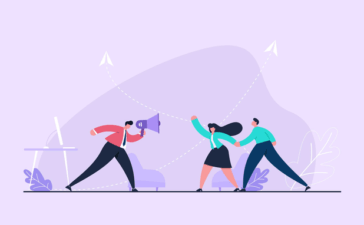The popular and hyped artificial intelligence has become the talking point in terms of every business problem. Reportedly, 42% of business executives have agreed that Artificial Intelligence would be the major driver of new machines and business technologies by 2021.
Besides being part of some of the innovative vistas in technology, Artificial Intelligence (AI) is also one of the misunderstood concepts among large communities. Most people still don’t understand how AI differs from machine learning (ML). Many people don’t understand how AI is not the same as machine learning (ML) and how ML is not the same as deep learning.
This confusion has led to major AI-related myths in the world that needs to be removed immediately. And, that’s why we’re here.
In this guide, we’ll be bursting the five common myths about AI:
AI can make humans jobless
If we take the example of the transportation industry, it’s one major sector where technology has boosted employment since its introduction. Artificial intelligence is another major discussion point in the same industry, where rapid progress in concepts of unmanned aerial vehicles and self-driving trucks. So, AI impact on shifting employment dynamics in the industry cannot be neglected. But, it is also wrong to oversimplify things.
A sudden shift of labor from human to AI machines is not possible and won’t happen. AI is developed to transform employment, but not to take away human jobs. Similar to the industrial revolution that turned employment from farm labor to advanced labor in factories, AI is likely to be positive changes to the lives of humans.
The organizations need to consider artificial intelligence as a developer of the workforce that makes it more efficient. It is there to help humans add more value to their overall work.
Add data in an AI system to enhance knowledge
That’s somehow true for certain time-test AI systems that work in well-defined constraints. But in general terms, it is just another AI myth.
All artificial intelligence-powered systems are reliable on algorithms for their knowledge or intelligence. This means these programs depend heavily on the “good” data that humans store in it for creating meaningful information from that stored data. But the “good” data itself is an ambiguous term.
To begin with, the data needs to be digested by the AI algorithm.
After that, the data needs to be cleared out to ensure the exclusion of outliers
Even the data needs high quality and very relevant information to analyze everything done by the algorithm for valuable results.
You have to understand that more data is not always the right option. The very famous example of this is the story of IBM’s Watson supercomputer that started giving poor results when loaded with extra information.
AI will replace low skill workers
It’s very naive to state that AI will replace old workers who do manual work. Artificial intelligence makes remarkable use of is information to improve certain cases, applications, and areas where human often do repetitive work. But this does not mean that humans will become unnecessary after this.
In a medical filed, AI has been helping humans in making an early diagnosis of diseases by analyzing various scans and reports in a jiffy. This system can highlight anomalies that can be missed by the naked eye. But can the same algorithm determine the patient’s profile and while recommending ideal remedies for a cure? No, it cannot. Can the AI algorithm’s verdict be trusted as an incontestable truth? No.
Its application is great and valuable to save physician’s time and effort to analyze patients and their reports without any fatiguing data. But this alone cannot take away a physician’s job or a lab technician’s job. AI is just to help humans not to eradicate them from their jobs.
Artificial Intelligence is new
This is another major myth, s AI is not new. The concept of machines to help humans learn or analyze different things has been around us for centuries. This began to offer more opportunities and to evaluate more past outcomes in the developing world.
American scientist, John McCarthy, in the 1950s had coined the term called “artificial intelligence” and became a pioneer of the science for the next five decades. If you take a deeper look into the matter, there have been mainstream movies exploring the same idea of “intelligence” in machines even before the 1950s. This idea may still appear new due to the marketing strategies of businesses, as every business wants to come up with something new for the consumers. But if we think deeply, AI is not new in the modern world.
The AI and ML terms are interchangeable
A layman may call artificial intelligence (AI) and machine learning (ML) interchangeable terms. But this is not true if we listen to any good data scientist.
AI refers to machines’ ability to display human-like intelligence for performing various tasks, like responding to natural language, solving complex problems, identifying the object in an image, or more.
Machine learning, on the other hand, is better understood as AI’s subset, where the algorithm can become better over time by making use of training data and evaluating patterns in particular data.
Machine learning is jutted one of the various approaches of artificial intelligence within its algorithms. Hence, it is already present in software apps and machines that use AI algorithms.
Author Bio:
Abraham is an IT and Technology writer who loves to write. Currently writing articles for TBS4 LATAM. His aim is to aware people about the right technology and IT Services. Writing articles, reading IT and Latest technology-related blogs are his passion. His aim is to stay motivated and studies new things about IT and Technology.




